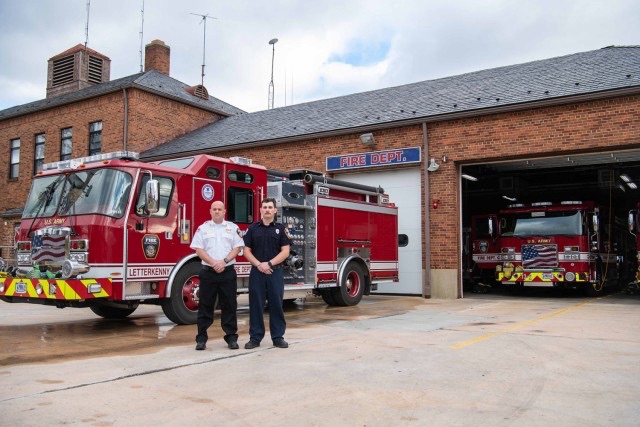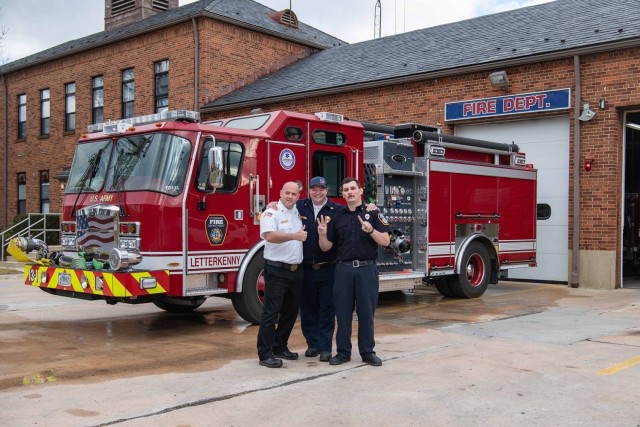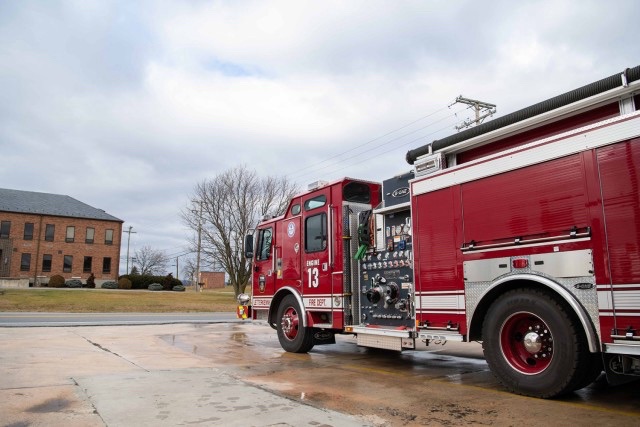
CHAMBERSBURG, Pa. — Letterkenny Army Depot made considerable strides in supporting the Army’s three-pronged approach to address per- and polyfluoroalkyl substances, known as PFAS.
In line with the National Defense Authorization Act for fiscal year 2020, which prohibits the use of fluorinated aqueous film-forming foam, or AFFF, at any military installation after Oct. 1, 2024, LEAD Fire and Emergency Services transitioned all three of their engines to the updated military specifications for land and maritime firefighting agent, fluorine-free foam, known as FFF.
Under the direction of Fire Chief Dave McGlynn and the supervision of Fire Capt. Scott McGonigal, the LEAD Fire and Emergency Services team successfully transitioned Engine 13-1 with a 50-gallon capacity, and Engines 13-2 and 13-3 with 30-gallon capacities each, Dec. 12 – 13, 2023.
“This achievement not only underscores the Army’s commitment to environmental stewardship and public health but also positions Letterkenny Army Depot and its Fire and Emergency Services team as a benchmark in military environmental initiatives,” McGlynn said. “Our success in transitioning to PFAS-free firefighting solutions exemplifies the Army’s role as a leader in sustainable and health-conscious practices.”
As LEAD embarks on supporting the Army’s Organic Industrial Base 15-year Modernization Implementation Plan, environmental and operational initiatives such as the fluorine-free foam transition postures LEAD Fire and Emergency Services to support modernization efforts.

“This transition will ensure that LEAD Fire and Emergency Services is properly equipped to offer safer protection to the depot during the modernization and construction phase,” McGlynn remarked. “In addition, this will help us continue to offer our service to the depot and surrounding community in a safer way.”
Letterkenny’s Fire and Emergency Services department services the entire installation and supports the Franklin County community through mutual aid agreements.
“The fact that this foam is PFAS-free ensures that we can deliver safer foam in our emergency response,” McGlynn stated. “Through Franklin County Fire Chief’s Association meetings, I’ve learned that Franklin County is also in the process of transitioning the foam on apparatuses throughout the county.”
The LEAD Fire and Emergency Services team worked in close coordination with the Directorate of Public Works and the Environmental Division to safely transfer and dispose of the old fluorinated aqueous film-forming foam.
“This transition was successfully accomplished through the mutual partnership and support from the entire Letterkenny team,” McGlynn said. “As in everything, communication is the key to success. This particular effort was a success because of the relationships and good communication between LEAD, Army Materiel Command and Aviation and Missile Command.”

LEAD and the Army are collaborating on a comprehensive assessment of areas where PFAS-containing chemicals were used and stored on-post. The results of this assessment and information gathered from groundwater sampling, performed in cooperation with local residents, will be used to develop an effective strategy to remediate the effects of past discharges.
“Removing all the fluorinated aqueous film-forming foam from Letterkenny ensures that a potential source of PFAS is eliminated,” stated Amy Renshaw, a physical scientist and installation restoration program manager and BRAC environmental coordinator for LEAD. “This transition greatly supports our assessment and helps ensure the success of the PFAS removal efforts.”
Limited sampling conducted during an onsite assessment at Letterkenny in 2021 found that locations related to past fire training with potential releases showed elevated PFOA/PFOS concentrations. The assessment led Letterkenny to seek to test off-post drinking water wells that could potentially be affected due to depot operations.
In July 2022, the U.S. Army conducted testing of 20 drinking water wells on private properties, including two community wells serving multiple residences, near the depot and found zero wells with concentrations that exceed 70 parts per trillion, the Environmental Protection Agency’s former lifetime health advisory level.

In a continued effort to determine potentially affected areas, Letterkenny is preparing to expand the evaluation area later this year. The Army will be contacting owners of properties adjacent to the depot to seek permission to test the quality of drinking water in wells. These tests will help assess if past industrial operations have potentially impacted the wells’ water.
The Army prohibits the use of AFFF for maintenance, testing and training on its installations and only uses AFFF for emergency responses. Now that the transition has occurred, LEAD will no longer utilize AFFF for emergency response.
“Firefighting is already an inherently dangerous job, and we felt it was vitally important to expedite this process once given the opportunity. The hope is to start a trend to get the rest of fire and emergency services to remove and replace theirs sooner than later,” McGlynn shared. “The successful replacement of PFAS-containing AFFF at Letterkenny Army Depot represents a significant stride toward a safer, more environmentally responsible military. It sets a precedent for other installations and services, highlighting the feasibility and urgency of transitioning to PFAS-free alternatives for a healthier and safer future.”
Letterkenny Army Depot is the Army’s premier professional organic maintenance facility that provides overhaul, repair and modifications for tactical missile air defense and space systems, electric power generation equipment and various military vehicles, support systems and protection programs. LEAD is a subordinate of U.S. Army Aviation and Missile Command, and is the Air and Missile Defense and Long Range Precision Fires depot, supporting systems for the Department of Defense, foreign partners and industry. Letterkenny Army Depot was established in 1942 and is a government-owned and -operated industrial installation located in Chambersburg, Pennsylvania.
By Dorie Heyer


think they missed a zero on those tank sizes. quick google says a few normal tank sizes are 300 and 500.
What are the key considerations when purchasing an ARFF truck?
Vehicle Class Water/Aqueous Film-Forming Foam (AFFF) Requirement
Class 2 ARFF 300 gallons
Class 3 ARFF 500 gallons
Class 4 ARFF 1,500 gallons